Imagine walking into your living room after a long, busy day—and instantly feeling calm.
No clutter, no noise, just soft light, natural textures, and a sense of peace.
That’s the magic of Japandi style, a beautiful blend of Japanese minimalism and Scandinavian comfort. It’s more than a design trend—it’s a lifestyle that celebrates balance, simplicity, and mindfulness.
But do you know? The term Japandi first appeared around 2016 when designers noticed the shared love of simplicity between the Japanese wabi-sabi philosophy (beauty in imperfection) and the Scandinavian hygge lifestyle (coziness and comfort). Together, they create a living space that feels both grounded and inviting—modern yet timeless.
Here are 14 Japandi living room ideas to help you create everyday serenity in your home.

Table of Contents

14 Best Japandi Living Room Looks
1. Embrace Neutral Harmony
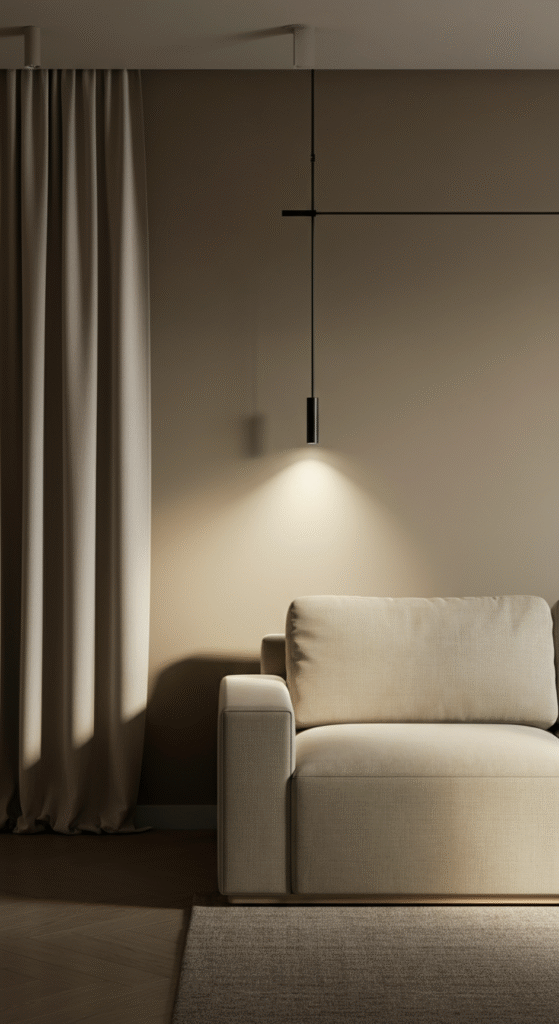
Start with a calming color palette.
Think whites, beiges, greys, and muted earthy tones—colors that let your mind breathe.
In Japandi interiors, every shade serves a purpose: to bring balance. Warm beige adds coziness, while cool greys add quiet sophistication. If you want contrast, use black sparingly to frame spaces or define furniture lines.
Interesting fact: Studies show that neutral colors can lower stress levels by reducing visual noise and creating a sense of order.
2. Choose Functional Minimalism
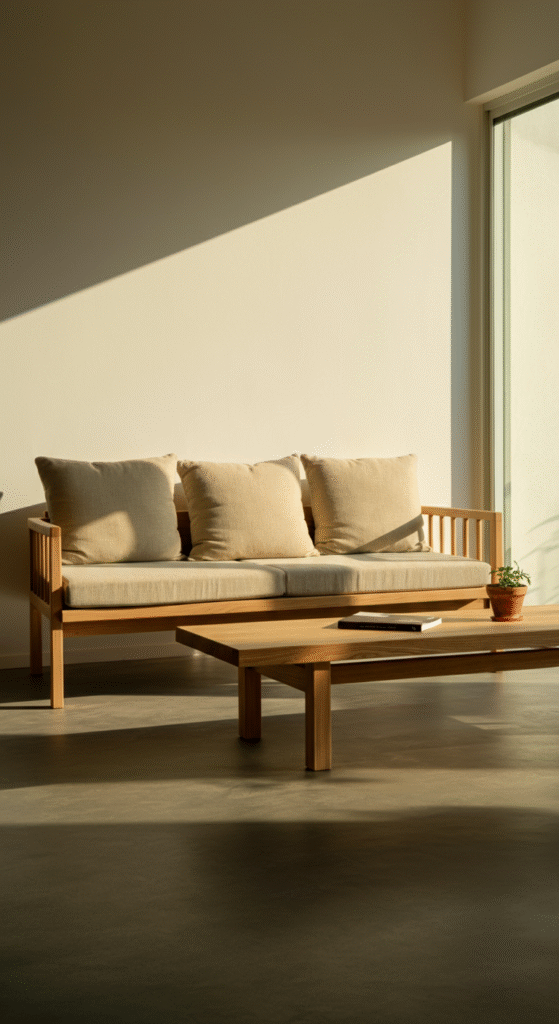
In a Japandi living room, less truly is more.
Keep only what you need—and make sure every piece has both function and beauty.
A simple sofa, a wooden coffee table, and low storage units are enough to set the tone. Avoid ornate furniture; instead, focus on craftsmanship and clean lines.
Myth alert: Minimalist doesn’t mean boring. Japandi proves that simplicity can feel rich when every texture, tone, and shape is intentional.
3. Add Natural Materials
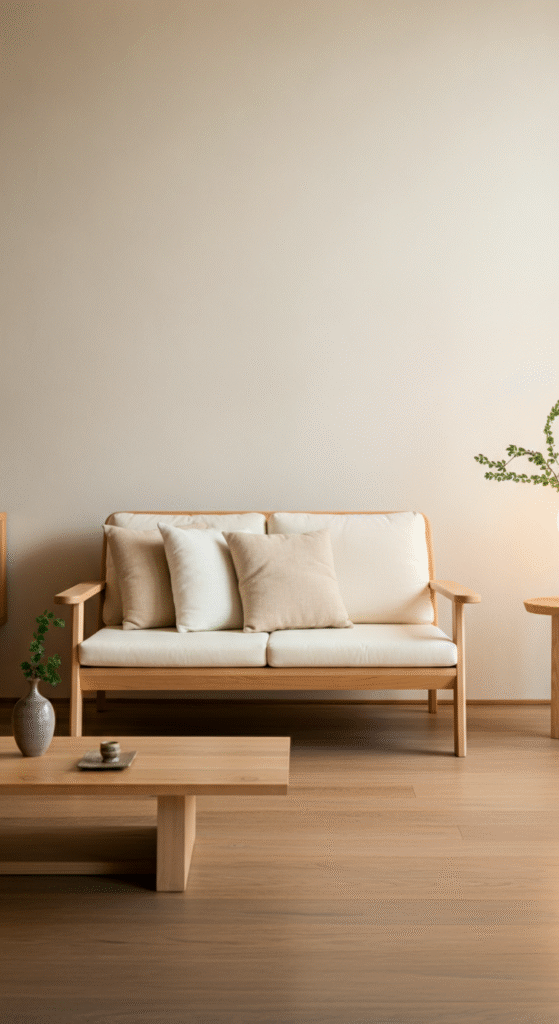
Wood, stone, bamboo, linen—Japandi design thrives on materials that feel real.
Choose oak or ash wood for Scandinavian warmth and dark walnut or bamboo for Japanese elegance. Linen cushions, wool throws, and jute rugs bring organic comfort underfoot.
When these textures interact, your living room becomes a sensory experience—soft, tactile, and deeply human.
4. Keep It Low and Grounded
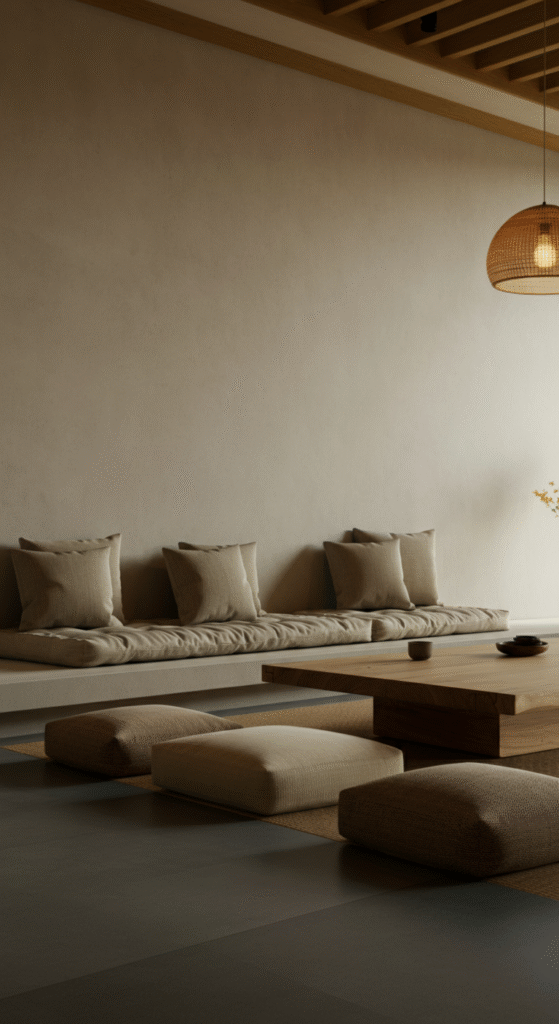
Do you know why traditional Japanese homes use low furniture?
It’s because sitting closer to the floor connects you with the earth—promoting calm and mindfulness.
In Japandi interiors, you’ll often find low-profile sofas, floor cushions, and short coffee tables. They create visual flow and make the room feel larger, open, and unpretentious.
Try pairing a low wood table with floor seating for an authentic and relaxed vibe.
5. Invite Natural Light
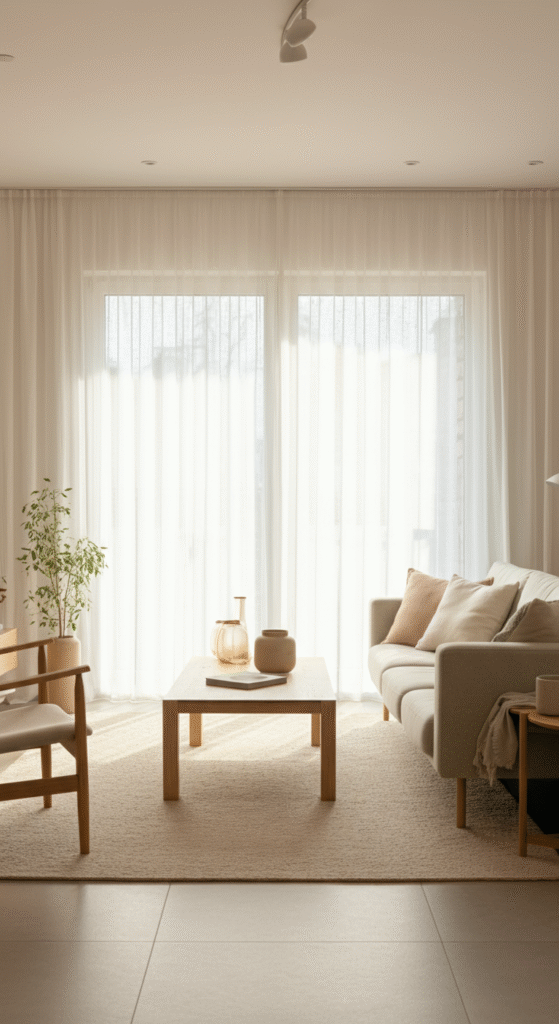
Light is the lifeblood of Japandi design.
Keep windows open, use sheer curtains, and let daylight spill across the room naturally.
Scandinavian homes value light because of long winters, while Japanese interiors embrace soft shadows for calm. The blend of both creates a beautifully balanced atmosphere—bright yet soothing.
If your room lacks natural light, use soft, warm lamps that mimic daylight rather than harsh overhead fixtures.
6. Incorporate Wabi-Sabi Accents
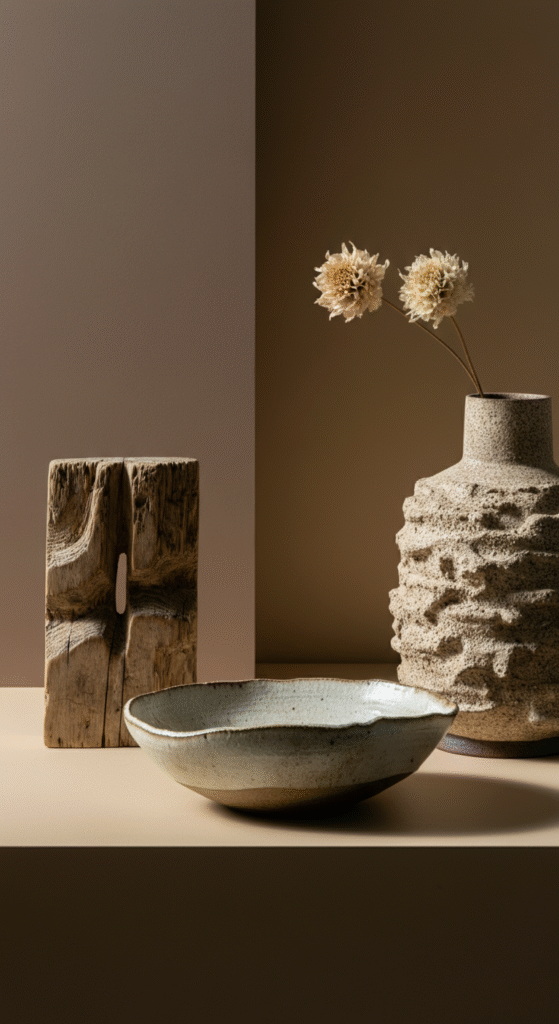
Wabi-sabi celebrates imperfection—an old vase, uneven pottery, or slightly worn textures.
These details remind us that beauty exists in the unfinished and the real.
Display a handcrafted ceramic bowl, a weathered wood sculpture, or a plant in an aged clay pot.
Each imperfection tells a quiet story, grounding your living space in authenticity.
7. Balance Warm and Cool Tones
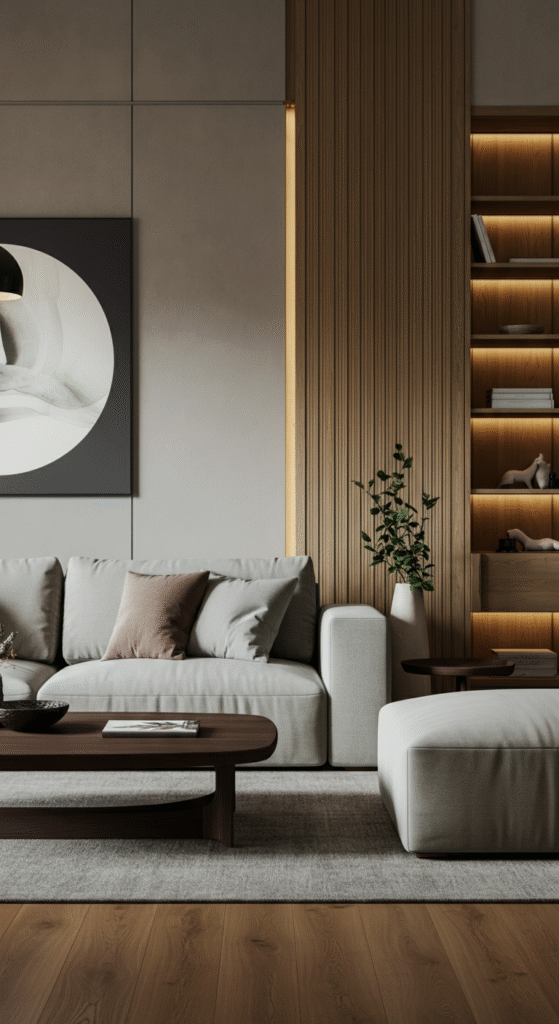
A true Japandi room strikes harmony between warm wood tones and cool minimalist elements.
For instance, pair warm oak furniture with a grey linen sofa, or soft beige walls with black metal frames.
This contrast builds depth while keeping the atmosphere peaceful and uncluttered.
The key is balance—never too warm, never too stark.
8. Integrate Greenery Thoughtfully
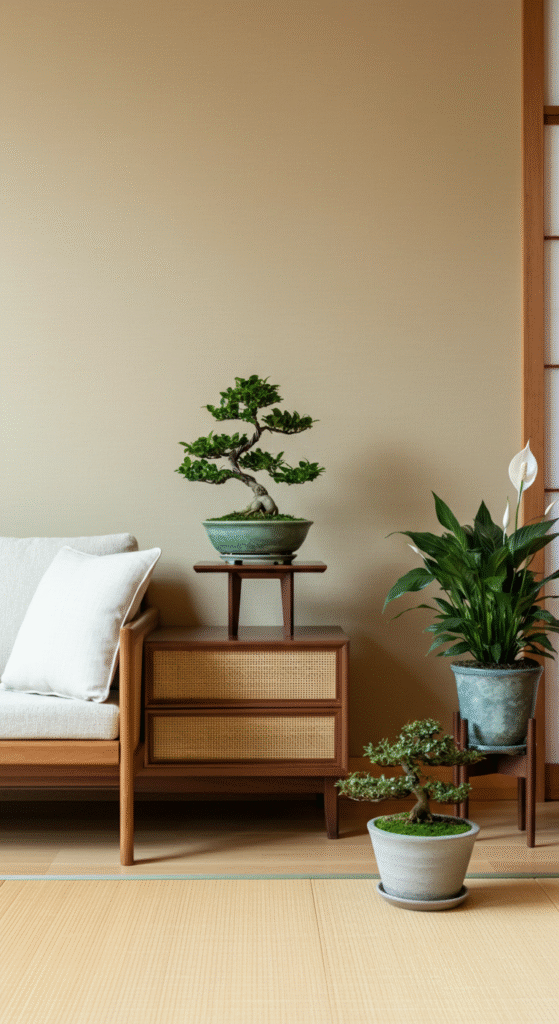
Plants bring life and softness to Japandi interiors.
Choose plants with simple shapes—like bonsai, peace lilies, or snake plants.
Avoid over-decorating; a few well-placed plants are better than a jungle.
Interesting fact: The Japanese concept of Shizen emphasizes harmony with nature, while Scandinavian homes often use plants to brighten long winters. Japandi blends both—celebrating nature indoors.
9. Use Textural Contrast
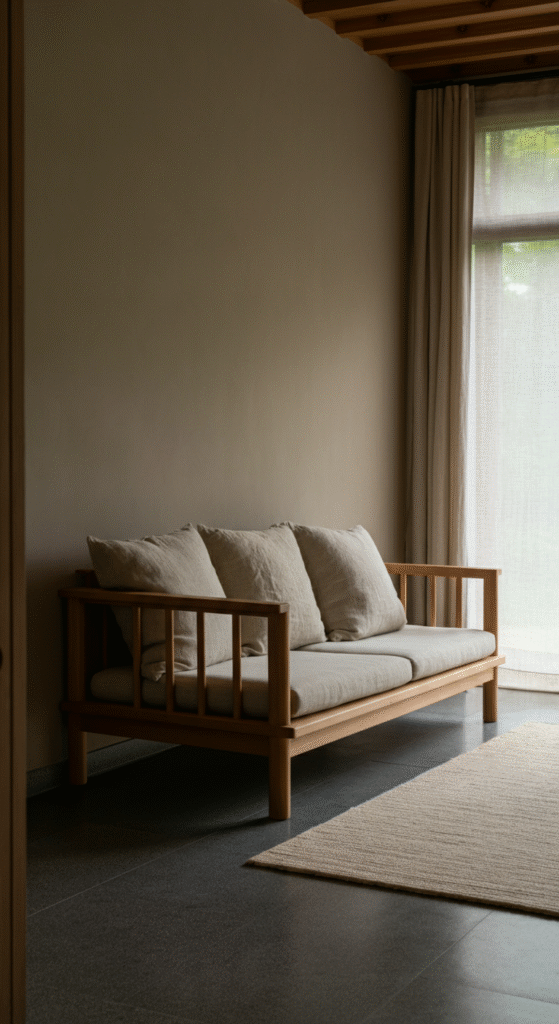
Texture breathes life into minimal spaces.
Mix smooth with rough, matte with glossy, and soft with structured.
A wool rug on a stone floor, a linen curtain beside a sleek wooden wall, or a ceramic lamp on a bamboo side table—all of these create visual rhythm.
These contrasts make your living room inviting without breaking its calm.
10. Choose Sustainable Pieces
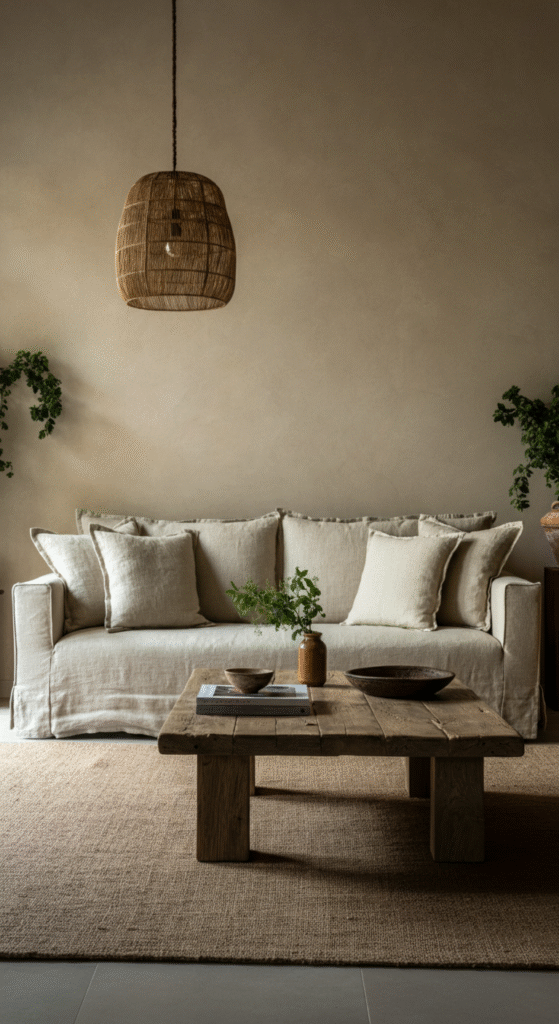
Japandi isn’t just about how your space looks—it’s about how it feels ethically.
Opt for furniture made from sustainably sourced wood, organic fabrics, and handmade crafts.
Support local artisans or vintage shops instead of mass-produced decor.
This conscious approach aligns with the slow living philosophy behind Japandi—buy less, choose better, and let your home tell a mindful story.
11. Focus on Clean Lines
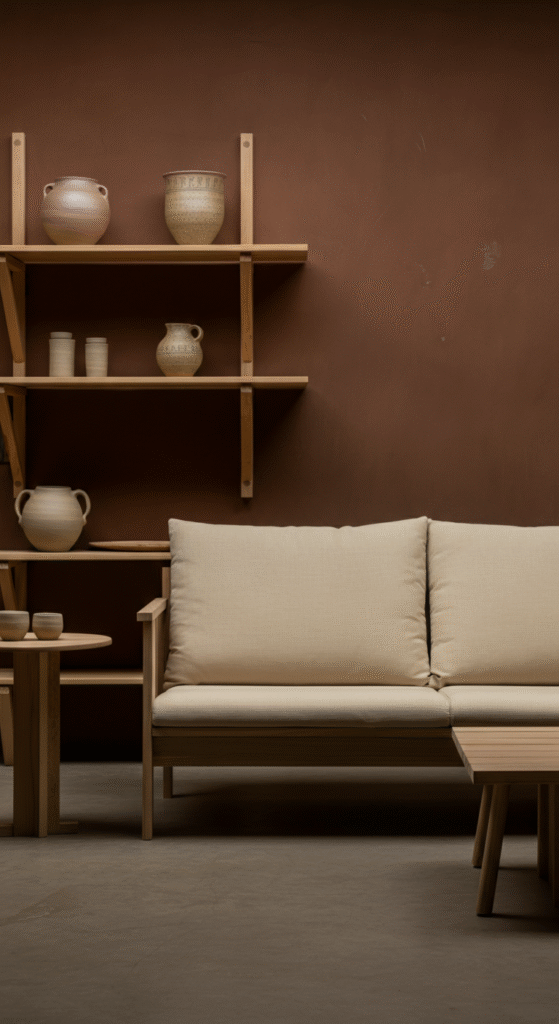
Smooth, straight lines define Japandi aesthetics.
Avoid curved or bulky furniture that interrupts visual flow.
For example, a rectangular coffee table, low open shelving, or slim-leg sofas keep the look balanced and modern.
It’s the geometry of calm—each line guiding your eyes gently through space.
12. Add Layers of Comfort
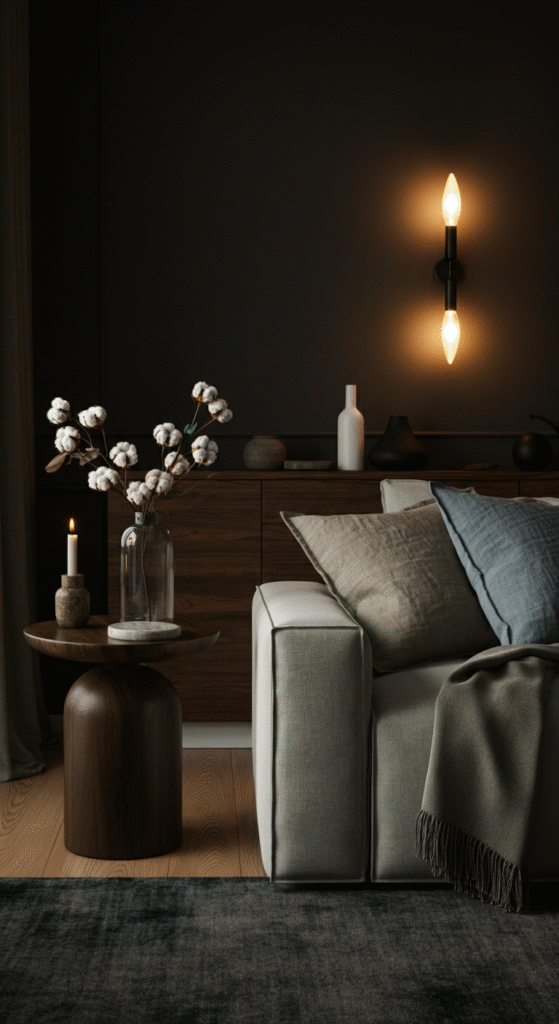
Though minimalist, Japandi interiors never feel cold.
Layer textures to achieve cozy simplicity—linen throws, wool cushions, cotton rugs.
Scandinavian design’s comfort meets Japanese restraint here.
Every textile adds warmth without clutter, making your living room soft, breathable, and inviting.
13. Choose Subtle Decor
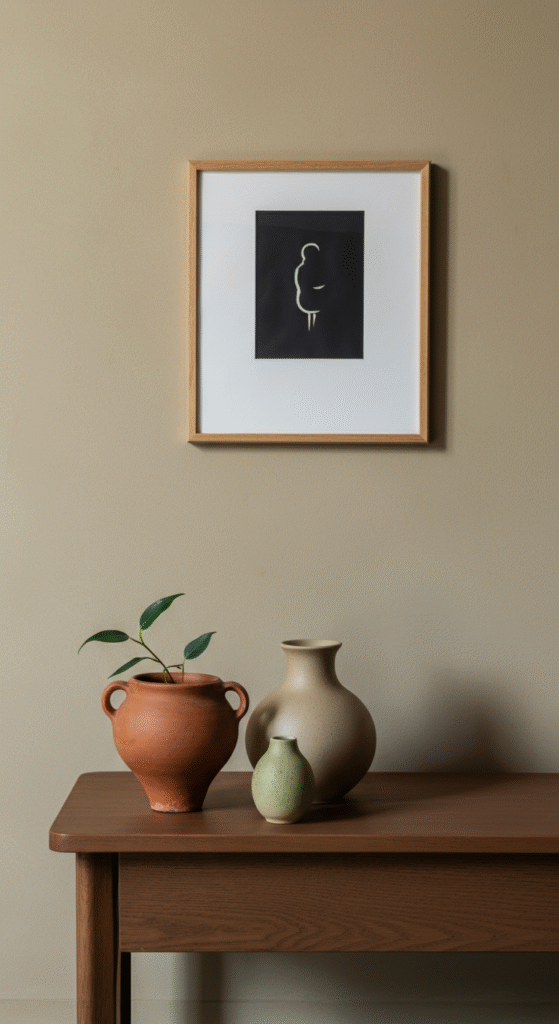
Decor in a Japandi room should feel purposeful, not excessive.
A framed art print with neutral tones, a clay pot, or a simple wooden tray on your table can be enough.
Avoid bright patterns or too many decorative objects. Leave breathing space around each piece—it’s the silence between objects that creates harmony.
14. Create a Zen Corner
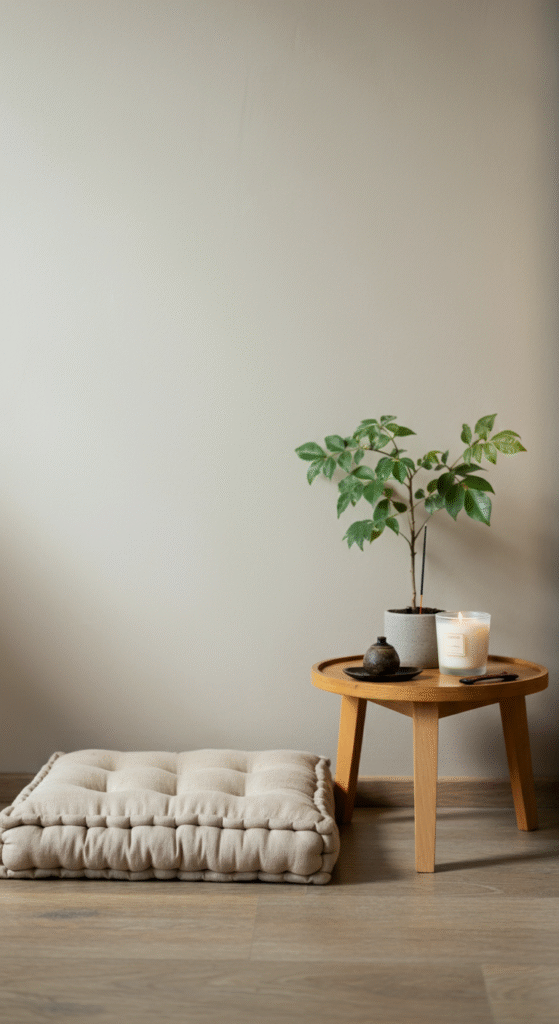
Finally, add a small spot just for calm—a Zen corner.
This could be a floor cushion by the window, a small table with a candle and incense, or a reading nook surrounded by plants.
This personal sanctuary brings mindfulness into your daily routine.
It’s where you pause, breathe, and reset amid life’s rush.
Bonus: Add Subtle Japanese Art or Calligraphy
If you want an authentic touch, introduce one or two Japanese art pieces—calligraphy, ink wash paintings, or minimalist wall scrolls.
They remind you of stillness and impermanence, completing your Japandi story.
Do you know? Japanese calligraphy (Shodo) is considered a form of meditation. Each brushstroke reflects the artist’s state of mind—making it a perfect addition to serene interiors.
Conclusion
A Japandi living room isn’t about chasing trends—it’s about finding peace in your everyday surroundings.
It’s the art of living slowly, mindfully, and beautifully.
By combining Japanese philosophy and Scandinavian warmth, you create a space that helps you breathe, focus, and rest.
Start small—maybe with neutral tones, a few plants, and a handmade wooden table.
Over time, let your space evolve naturally, reflecting your rhythm of life.
Because serenity isn’t something you buy—it’s something you design, one thoughtful detail at a time.
Frequently Asked Questions (FAQs)
What is Japandi style?
Japandi is a fusion of Japanese minimalism and Scandinavian warmth. It blends the Japanese principle of simplicity, function, and nature with the Scandinavian emphasis on coziness, light, and comfort. The result is a serene, balanced living space that feels both modern and timeless.
What colors are best for a Japandi living room?
The best colors for a Japandi living room include soft neutrals like beige, light grey, and white. These colors create a calming atmosphere. You can also add darker accents like black or charcoal for contrast and depth. The focus is on creating harmony with minimal color contrast.
How do I incorporate natural elements into a Japandi living room?
You can add natural elements such as wood furniture, stone accents, indoor plants, and woven textures. These materials bring a sense of calm and connection to nature, which is central to both Japanese and Scandinavian design principles.
Can Japandi style work in small living rooms?
Yes, Japandi style is ideal for small spaces. The minimalist approach helps avoid clutter, while the neutral color palette creates a sense of openness. Choosing low-profile furniture and using vertical storage options can also make small rooms feel larger and more serene.
What type of furniture works in a Japandi living room?
Furniture should have clean lines and a functional, simple design. Opt for low, sleek pieces like a simple wooden coffee table, a sofa with clean-cut lines, and low-profile shelving. Avoid ornate or bulky items—simplicity is key.










